|
시장보고서
상품코드
1534175
세계의 자동차용 백미러 시장 : 시장 규모 조사 - 차량 유형별, 제품 배치별, 지역별 예측(2022-2032년)Global Automotive Rear View Mirror Market Size Study, by Vehicle Type (Passenger Vehicle, Commercial Vehicle), by Product Placement (Exterior, Interior), and Regional Forecasts 2022-2032 |
||||||
세계의 자동차용 백미러 시장은 2023년에 약 120억 달러로 평가되었고, 예측 기간 2024년부터 2032년까지 5.93% 이상의 견실한 성장률로 성장할 것으로 예측되고 있습니다.
자동차용 백미러는 차량 내부에 설치된 반사면으로 운전자가 후방 상황을 확인할 수 있습니다. 이것은 중요한 안전 기능이며 운전자의 차선 변경, 주차 및 충돌 회피에 도움이 되며 차량 뒤의 교통 상황과 상황을 시각적으로 표현합니다. 최근의 백미러에는 방현 기술, 블라인드 스팟 모니터, 심지어 시인성과 안전성을 높이는 디지털 디스플레이 등의 기능이 내장되어 있는 경우가 많습니다. 시장은 자동차 산업을 형성하는 주요 촉진요인에 의해 번창하고 있습니다. 고급 스포츠용 다목적 차량(SUV)에 대한 선호도가 높아짐에 따라 선진적인 백미러 솔루션에 대한 수요가 높아지고 있습니다. 또한 ADAS(첨단 운전 지원 시스템)의 통합이 진행됨에 따라 최신 자동차에 필수적인 안전 부품으로서 백미러의 중요성이 부각되고 있습니다. 또한 자동차 생태계의 안전에 대한 관심이 높아짐에 따라 시인성과 안전 기능을 강화할 필요성을 촉진하고 시장 성장을 더욱 촉진하고 있습니다.
예측 기간 동안 시장은 특히 신흥 경제 국가와 성숙 경제 국가에서 자동차 생산에 영향을 미치는 공급망 혼란과 같은 과제에 직면합니다. 이러한 혼란은 스마트 미러나 풀 스크린 모니터와 같은 차량 설계의 진보를 필요로 하고 정부의 봉쇄 조치 중 승객과 운전자의 보호를 강화하기 위한 멀티 센서 시스템도 필요하게 됩니다.
프리미엄 SUV의 인기 증가는 시장의 성장을 현저하게 촉진하고 있습니다. 백미러의 보급은 SUV의 보급의 직접적인 결과이며, 특히 SUV는 차고가 높기 때문에 후퇴시에 시야가 방해되는 경우가 많습니다. 첨단 지역에서는 전통적인 거울이 점차 카메라 시스템을 대체하여 운전자에게 더 넓고 편안한 시야를 제공합니다. 현재 자동차 시장에서는 백미러와 전자미러가 주류이며 다양한 소비자 요구에 대응하고 있습니다. 소형 SUV와 크로스오버의 저렴한 가격과 소유 비용 절감이 특히 중국과 인도 등 신흥 경제국에서 인기를 끌고 있습니다.
중요한 시장 동향은 자동차 미러에 다양한 기술을 통합하는 것입니다. 조명이 불충분한 도로에서의 야간 운전은 후속 차량으로부터의 눈부신 빛에 의해 불편하고 위험할 수 있으며, 운전자의 주의를 끌거나 눈을 가려 사고로 이어질 수 있습니다. 눈부심을 감지하여 밝기를 자동 조정하는 센서를 탑재한 자동차용 인사이드 백 미러(IRVM)나 조광 미러는 이러한 사고를 방지하는데 도움이 됩니다. 카메라와 LED 기술을 조광 미러에 통합하는 등 기술의 발전으로 자동차의 안전과 편안함이 더욱 향상되고 있습니다.
그러나 자동 조광 미러의 신뢰성 문제가 보급에 방해가 되어 큰 과제가 되고 있습니다. 자동차 자동 조광 미러와 같은 미러 기술은 효과적으로 작동하기 위해 설치된 센서에 크게 의존합니다. 이러한 센서에 고장이나 고장이 발생하면 미러가 어두워지기까지의 시간이 예상보다 길어질 수 있습니다. 단락 및 배선 느슨함과 같은 문제는 자동 조광 미러의 성능에 영향을 줄 수 있습니다. 많은 차에는 착색 창이 포함되어 있으며 소비자는 애프터마켓의 착색 필름을 추가하는 경우가 많기 때문에 창이 어두워지고 조광 미러의 기능에 영향을 줄 수 있습니다. 따라서 자동 디밍 미러의 신뢰성에 대한 우려는 예측 기간 동안 자동차 백미러 시장의 성장에 큰 어려움이 됩니다.
또한 주행 거리에서 미관과 고급 기능으로 소비자의 기호가 변화하고 있는 것도 자동 조광 미러, 전동 격납식 사이드 미러, 인디케이터 부착 미러 등 고급 미러 수요 증가에 기여하고 있습니다,이 지역의 판매 성장을 견인하게 됩니다. 대량 생산되는 승용차와는 별도로, 고급 차량은 차내 백미러와 사이드 뷰 미러 모두에서 고급 자동 디밍 미러의 중요한 응용 분야입니다. 고급차에 사용되는 시스템은 더욱 정교하고 비싸기 때문에 시장의 수익 성장에 더 큰 점유율을 차지하고 있습니다.
세계의 자동차용 백미러 시장 조사에서 고려한 주요 지역은 아시아태평양, 북미, 유럽, 라틴아메리카 및 기타 세계 지역입니다. 북미는 자동차 백미러 시장에서 수익면에서 지배적인 지역입니다. 이 지역 시장 성장은 자동차의 안전성이 강하게 중시되고 첨단 미러 기술에 대한 수요가 높아지고 있는 등이 요인이 되고 있습니다. 또, 사각이 큰 SUV나 트럭의 인기가 높아지고 있는 것도 시장을 견인하고 있습니다. 또한 차량의 시인성에 관한 엄격한 정부 규제와 ADAS(첨단 운전 지원 시스템)의 통합도 시장 성장에 기여하고 있습니다. 한편 아시아태평양 시장은 세계 자동차 인사이드 백미러(IRVM) 시장의 급성장에 힘입어 예측기간 중 가장 빠른 속도로 성장할 것으로 예측되며 업계 기업으로서의 지위를 단단합니다. 중국, 인도, 한국, 일본 등 주요 국가들은 승용차의 보급률이 높기 때문에 이 성장을 견인하고 있습니다. APAC의 승용차 부문은 예측 기간 동안 다른 지역을 넘어 시장 성장을 더욱 밀어올릴 것으로 예상됩니다.
목차
제1장 세계의 자동차용 백미러 시장 주요 요약
- 세계의 자동차용 백미러 시장 규모 및 예측(2022-2032년)
- 지역별 개요
- 부문별 개요
- 차량 유형별
- 제품 배치별
- 주요 동향
- 경기 후퇴의 영향
- 애널리스트의 결론 및 제안
제2장 세계의 자동차용 백미러 시장 정의 및 조사의 전제조건
- 조사 목적
- 시장의 정의
- 조사의 전제조건
- 포함과 제외
- 제한 사항
- 공급측 분석
- 가용성
- 인프라
- 규제 환경
- 시장 경쟁
- 경제성(소비자의 시점)
- 수요측 분석
- 규제 프레임워크
- 기술의 진보
- 환경에 대한 배려
- 소비자의 의식 및 수용
- 조사 방법
- 조사 대상년도
- 환율 변환율
제3장 세계의 자동차용 백미러 시장 역학
- 시장 성장 촉진요인
- 프리미엄 SUV의 인기 증가
- 안전성에 대한 관심 증가
- 시장의 과제
- 공급망의 혼란
- 자동 조광 미러의 신뢰성 문제
- 시장 기회
- 첨단 기술을 미러에 통합
- 기술의 진보
제4장 세계의 자동차용 백미러 시장 산업 분석
- Porter's Five Forces 모델
- 공급기업의 협상력
- 구매자의 협상력
- 신규 참가업체의 위협
- 대체품의 위협
- 경쟁 기업간 경쟁 관계
- Porter's Five Forces 모델에 대한 미래적 접근
- Porter's Five Forces의 영향 분석
- PESTEL 분석
- 정치
- 경제
- 사회
- 기술
- 환경
- 법률
- 주요 투자 기회
- 주요 성공 전략
- 파괴적 동향
- 업계 전문가의 시점
- 애널리스트의 결론 및 제안
제5장 세계의 자동차용 백미러 시장 규모 및 예측 : 차량 유형별(2022-2032년)
- 부문 대시보드
- 세계의 자동차용 백미러 시장 : 수익 동향 분석(2022년, 2032년)
- 승용차
- 상용차
제6장 세계의 자동차용 백미러 시장 규모 및 예측 : 제품 배치별(2022-2032년)
- 부문 대시보드
- 세계의 자동차용 백미러 시장 : 수익 동향 분석(2022년, 2032년)
- 외관
- 인테리어
제7장 세계의 자동차용 백미러 시장 규모 및 예측 : 지역별(2022-2032년)
- 북미
- 미국
- 캐나다
- 유럽
- 영국
- 독일
- 프랑스
- 스페인
- 이탈리아
- 기타 유럽
- 아시아태평양
- 중국
- 인도
- 일본
- 호주
- 한국
- 기타 아시아태평양
- 라틴아메리카
- 브라질
- 멕시코
- 기타 라틴아메리카
- 중동 및 아프리카
- 사우디아라비아
- 남아프리카
- 기타 중동 및 아프리카
제8장 경쟁 정보
- 주요 기업의 SWOT 분석
- 주요 시장 전략
- 기업 프로파일
- Gentex Corp.
- 주요 정보
- 개요
- 재무(데이터의 이용가능성에 따름)
- 제품 개요
- 시장 전략
- Holitech Technology Co. Ltd.
- Konview Electronics Corp. Ltd.
- Lumax Industries Ltd
- Magna International Inc.
- MEKRA Lang GmbH and Co. KG
- Murakami Corp.
- OmniVision Technologies Inc.
- Panasonic Holdings Corp.
- Sakae Riken Kogyo Co. Ltd.
- Shenzhen Germid Co. Ltd
- SMR Deutschland GmbH
- Burco Inc.
- Continental AG
- FLABEG Automotive Glass Group GmbH
- Gentex Corp.
제9장 조사 과정
- 조사 과정
- 데이터 마이닝
- 분석
- 시장 추정
- 검증
- 출판
- 조사 속성
Global Automotive Rear View Mirror Market is valued at approximately USD 12 Billion in 2023 and is anticipated to grow with a healthy growth rate of more than 5.93% over the forecast period 2024-2032. An automotive rear-view mirror is a reflective surface mounted inside a vehicle that allows the driver to see what is behind them. It is a crucial safety feature, helping drivers change lanes, park, and avoid collisions by providing a visual representation of the traffic and conditions behind the car. Modern rear-view mirrors often incorporate features like anti-glare technology, blind-spot monitoring, and even digital displays for enhanced visibility and safety. The market thrives on key drivers shaping the automotive landscape. With the rising preference for premium sport utility vehicles (SUVs), there's a corresponding demand for advanced rear-view mirror solutions. Additionally, the growing integration of Advanced Driver Assistance Systems (ADAS) underscores the importance of rear-view mirrors as integral safety components in modern vehicles. Moreover, increasing safety concerns within the automotive ecosystem drive the need for enhanced visibility and safety features, further fueling market growth.
During the forecast period, the market faces challenges such as supply chain disruptions impacting automobile production, particularly in developing and mature economies. These disruptions necessitate advancements in vehicle design like smart mirrors and full-screen monitors, alongside multi-sensor systems to enhance passenger and driver protection amidst government lockdown measures, affecting production volumes and demand, thereby influencing auto sales and the supply chain network of auto component suppliers and manufacturers across production sites.
The growing popularity of premium SUVs is notably driving market growth. The widespread adoption of rear-view mirrors is a direct result of SUVs' prevalence, particularly due to their height, which often obstructs visibility during reversing. In developed regions, traditional mirrors are gradually being replaced by camera systems, offering a wider and more comfortable view to drivers. Presently, rear-view and electronic mirrors dominate the automotive market, catering to diverse consumer needs. The affordability and reduced ownership costs of small SUVs and crossovers are driving their popularity, especially in emerging economies like China and India.
A significant market trend is the integration of different technologies in automotive mirrors. Night driving on poorly lit roads can be uncomfortable and hazardous due to the bright glare from vehicles behind, which can distract and blind the driver, potentially leading to accidents. Automotive inside rearview mirrors (IRVM) and dimming mirrors, equipped with sensors to detect glare and automatically adjust their brightness, help prevent such accidents. Advancements in technology, such as integrating cameras and LED technology with dimming mirrors, further enhance vehicle safety and comfort.
However, reliability issues with auto-dimming mirrors hinder adoption and pose a significant challenge. Mirror technologies, such as automotive auto-dimming mirrors, rely heavily on their installed sensors for effective functioning. If these sensors experience failures or malfunctions, the time taken for the mirrors to dim may be longer than expected. Issues like short circuits and loose wires can also affect the performance of auto-dimming mirrors. Many vehicles come with tinted windows, and consumers often add aftermarket tint films, which can make the windows dimmer and potentially impact the functioning of dimming mirrors. Therefore, reliability concerns with auto-dimming mirrors pose a significant challenge to the growth of the automotive rear-view mirror market during the forecast period.
Moreover, the changing consumer preference from mileage to aesthetics and advanced features is also contributing to the increasing demand for advanced mirrors such as auto-dimming, power fold side-view mirrors, and mirrors with indicators, which will drive revenue growth in the region. Apart from mass-produced passenger cars, luxury cars are also a significant application segment for advanced auto-dimming mirrors in both interior rear-view and side-view mirrors. The systems used in luxury cars are more sophisticated and expensive, contributing to a larger share of revenue growth in the market.
The key regions considered for the global Automotive Rear View Mirror Market study include Asia Pacific, North America, Europe, Latin America, and Rest of the World. North America is a dominating region in the Automotive Rear View Mirror Market in terms of revenue. The market growth in the region is being attributed to factors including strong emphasis on vehicle safety, leading to increased demand for advanced mirror technologies. The rising popularity of SUVs and trucks, with their larger blind spots, is also driving the market. Additionally, stringent government regulations regarding vehicle visibility and the integration of advanced driver assistance systems (ADAS) are contributing to the growth of this market. Whereas, the market in Asia Pacific is anticipated to grow at the fastest rate over the forecast period fueled by the rapid growth in the global automotive inside rearview mirror (IRVM) market, solidifying its position as a key player in the industry. Major countries like China, India, South Korea, and Japan are driving this growth due to their high adoption rates of passenger cars. The passenger car segment in APAC is expected to outpace other regions during the forecast period, further boosting market growth.
Major market players included in this report are:
- Gentex Corp.
- Holitech Technology Co. Ltd.
- Konview Electronics Corp. Ltd.
- Lumax Industries Ltd.
- Magna International Inc.
- MEKRA Lang GmbH and Co. KG
- Murakami Corp.
- OmniVision Technologies Inc.
- Panasonic Holdings Corp.
- Sakae Riken Kogyo Co. Ltd.
- Shenzhen Germid Co. Ltd
- SMR Deutschland GmbH
- Burco Inc.
- Continental AG
- FLABEG Automotive Glass Group GmbH
The detailed segments and sub-segment of the market are explained below:
By Vehicle Type:
- Passenger Vehicle
- Commercial Vehicle
By Product Placement:
- Exterior
- Interior
By Region:
- North America
- U.S.
- Canada
- Europe
- UK
- Germany
- France
- Spain
- Italy
- ROE
- Asia-Pacific
- China
- India
- Japan
- Australia
- South Korea
- RoAPAC
- Latin America
- Brazil
- Mexico
- RoLA
- Middle East & Africa
- Saudi Arabia
- South Africa
- RoMEA
Years considered for the study are as follows:
- Historical year - 2022
- Base year - 2023
- Forecast period - 2024 to 2032
Key Takeaways:
- Market Estimates & Forecast for 10 years from 2022 to 2032.
- Annualized revenues and regional level analysis for each market segment.
- Detailed analysis of geographical landscape with Country level analysis of major regions.
- Competitive landscape with information on major players in the market.
- Analysis of key business strategies and recommendations on future market approach.
- Analysis of competitive structure of the market.
- Demand side and supply side analysis of the market.
Table of Contents
Chapter 1. Global Automotive Rear View Mirror Market Executive Summary
- 1.1. Global Automotive Rear View Mirror Market Size & Forecast (2022-2032)
- 1.2. Regional Summary
- 1.3. Segmental Summary
- 1.3.1. By Vehicle Type
- 1.3.2. By Product Placement
- 1.4. Key Trends
- 1.5. Recession Impact
- 1.6. Analyst Recommendation & Conclusion
Chapter 2. Global Automotive Rear View Mirror Market Definition and Research Assumptions
- 2.1. Research Objective
- 2.2. Market Definition
- 2.3. Research Assumptions
- 2.3.1. Inclusion & Exclusion
- 2.3.2. Limitations
- 2.3.3. Supply Side Analysis
- 2.3.3.1. Availability
- 2.3.3.2. Infrastructure
- 2.3.3.3. Regulatory Environment
- 2.3.3.4. Market Competition
- 2.3.3.5. Economic Viability (Consumer's Perspective)
- 2.3.4. Demand Side Analysis
- 2.3.4.1. Regulatory frameworks
- 2.3.4.2. Technological Advancements
- 2.3.4.3. Environmental Considerations
- 2.3.4.4. Consumer Awareness & Acceptance
- 2.4. Estimation Methodology
- 2.5. Years Considered for the Study
- 2.6. Currency Conversion Rates
Chapter 3. Global Automotive Rear View Mirror Market Dynamics
- 3.1. Market Drivers
- 3.1.1. Growing Popularity of Premium SUVs
- 3.1.2. Increasing Safety Concerns
- 3.2. Market Challenges
- 3.2.1. Supply Chain Disruptions
- 3.2.2. Reliability Issues with Auto-Dimming Mirrors
- 3.3. Market Opportunities
- 3.3.1. Integration of Advanced Technologies in Mirrors
- 3.3.2. Advancements in technology
Chapter 4. Global Automotive Rear View Mirror Market Industry Analysis
- 4.1. Porter's 5 Force Model
- 4.1.1. Bargaining Power of Suppliers
- 4.1.2. Bargaining Power of Buyers
- 4.1.3. Threat of New Entrants
- 4.1.4. Threat of Substitutes
- 4.1.5. Competitive Rivalry
- 4.1.6. Futuristic Approach to Porter's 5 Force Model
- 4.1.7. Porter's 5 Force Impact Analysis
- 4.2. PESTEL Analysis
- 4.2.1. Political
- 4.2.2. Economical
- 4.2.3. Social
- 4.2.4. Technological
- 4.2.5. Environmental
- 4.2.6. Legal
- 4.3. Top Investment Opportunity
- 4.4. Top Winning Strategies
- 4.5. Disruptive Trends
- 4.6. Industry Expert Perspective
- 4.7. Analyst Recommendation & Conclusion
Chapter 5. Global Automotive Rear View Mirror Market Size & Forecasts by Vehicle Type 2022-2032
- 5.1. Segment Dashboard
- 5.2. Global Automotive Rear View Mirror Market: Vehicle Type Revenue Trend Analysis, 2022 & 2032 (USD Billion)
- 5.2.1. Passenger Vehicle
- 5.2.2. Commercial Vehicle
Chapter 6. Global Automotive Rear View Mirror Market Size & Forecasts by Product Placement 2022-2032
- 6.1. Segment Dashboard
- 6.2. Global Automotive Rear View Mirror Market: Product Placement Revenue Trend Analysis, 2022 & 2032 (USD Billion)
- 6.2.1. Exterior
- 6.2.2. Interior
Chapter 7. Global Automotive Rear View Mirror Market Size & Forecasts by Region 2022-2032
- 7.1. North America Automotive Rear View Mirror Market
- 7.1.1. U.S. Automotive Rear View Mirror Market
- 7.1.1.1. Vehicle Type breakdown size & forecasts, 2022-2032
- 7.1.1.2. Product Placement breakdown size & forecasts, 2022-2032
- 7.1.2. Canada Automotive Rear View Mirror Market
- 7.1.2.1. Vehicle Type breakdown size & forecasts, 2022-2032
- 7.1.2.2. Product Placement breakdown size & forecasts, 2022-2032
- 7.1.1. U.S. Automotive Rear View Mirror Market
- 7.2. Europe Automotive Rear View Mirror Market
- 7.2.1. U.K. Automotive Rear View Mirror Market
- 7.2.2. Germany Automotive Rear View Mirror Market
- 7.2.3. France Automotive Rear View Mirror Market
- 7.2.4. Spain Automotive Rear View Mirror Market
- 7.2.5. Italy Automotive Rear View Mirror Market
- 7.2.6. Rest of Europe Automotive Rear View Mirror Market
- 7.3. Asia-Pacific Automotive Rear View Mirror Market
- 7.3.1. China Automotive Rear View Mirror Market
- 7.3.2. India Automotive Rear View Mirror Market
- 7.3.3. Japan Automotive Rear View Mirror Market
- 7.3.4. Australia Automotive Rear View Mirror Market
- 7.3.5. South Korea Automotive Rear View Mirror Market
- 7.3.6. Rest of Asia Pacific Automotive Rear View Mirror Market
- 7.4. Latin America Automotive Rear View Mirror Market
- 7.4.1. Brazil Automotive Rear View Mirror Market
- 7.4.2. Mexico Automotive Rear View Mirror Market
- 7.4.3. Rest of Latin America Automotive Rear View Mirror Market
- 7.5. Middle East & Africa Automotive Rear View Mirror Market
- 7.5.1. Saudi Arabia Automotive Rear View Mirror Market
- 7.5.2. South Africa Automotive Rear View Mirror Market
- 7.5.3. Rest of Middle East & Africa Automotive Rear View Mirror Market
Chapter 8. Competitive Intelligence
- 8.1. Key Company SWOT Analysis
- 8.2. Top Market Strategies
- 8.3. Company Profiles
- 8.3.1. Gentex Corp.
- 8.3.1.1. Key Information
- 8.3.1.2. Overview
- 8.3.1.3. Financial (Subject to Data Availability)
- 8.3.1.4. Product Summary
- 8.3.1.5. Market Strategies
- 8.3.2. Holitech Technology Co. Ltd.
- 8.3.3. Konview Electronics Corp. Ltd.
- 8.3.4. Lumax Industries Ltd
- 8.3.5. Magna International Inc.
- 8.3.6. MEKRA Lang GmbH and Co. KG
- 8.3.7. Murakami Corp.
- 8.3.8. OmniVision Technologies Inc.
- 8.3.9. Panasonic Holdings Corp.
- 8.3.10. Sakae Riken Kogyo Co. Ltd.
- 8.3.11. Shenzhen Germid Co. Ltd
- 8.3.12. SMR Deutschland GmbH
- 8.3.13. Burco Inc.
- 8.3.14. Continental AG
- 8.3.15. FLABEG Automotive Glass Group GmbH
- 8.3.1. Gentex Corp.
Chapter 9. Research Process
- 9.1. Research Process
- 9.1.1. Data Mining
- 9.1.2. Analysis
- 9.1.3. Market Estimation
- 9.1.4. Validation
- 9.1.5. Publishing
- 9.2. Research Attributes



















